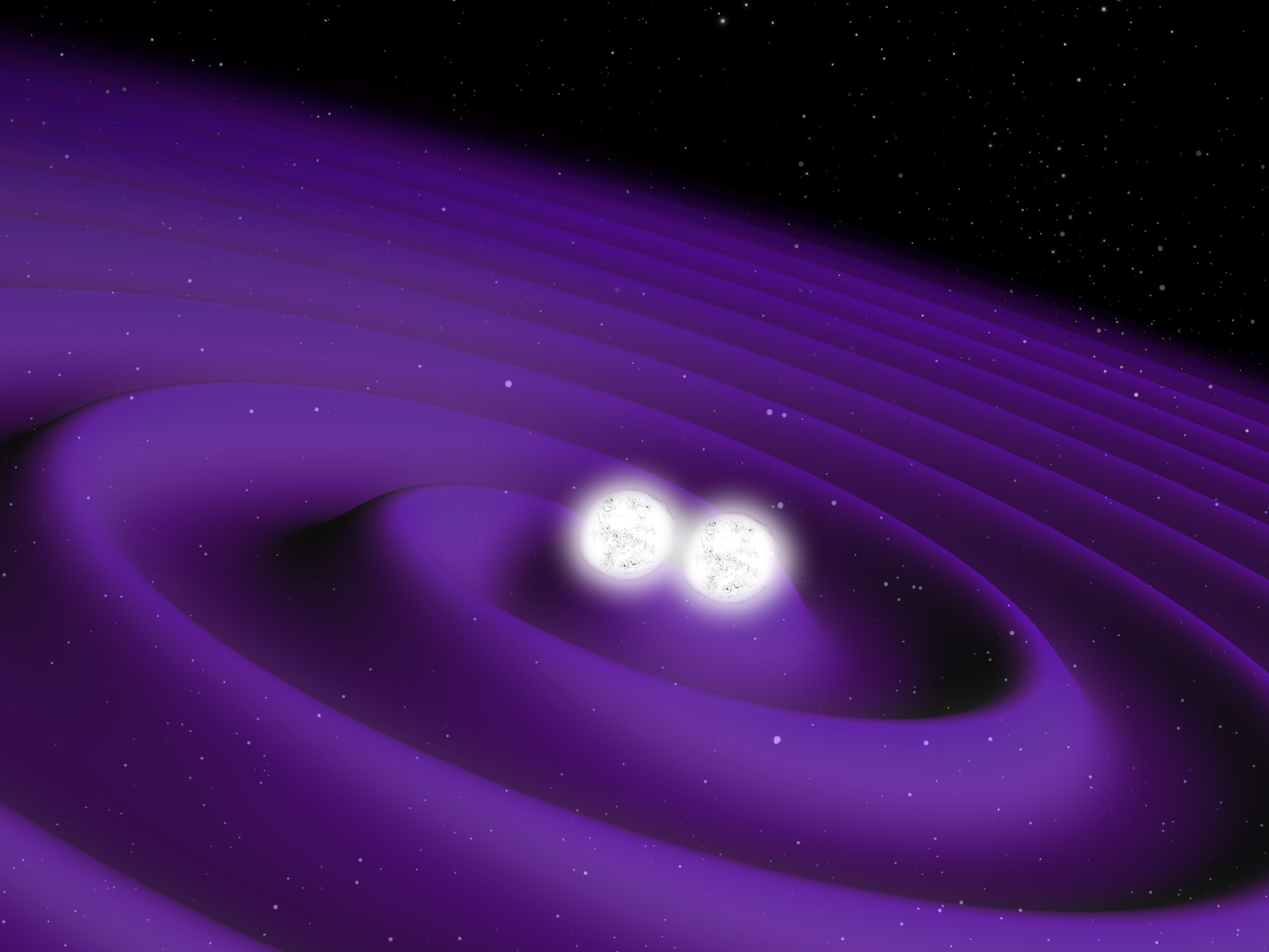Gravitational waves: a new research instrument

Abstract representation of the neutron stars as they spiral towards each other, just before merging. © ESA
It was in 2015 that the scientific community first measured the passage of gravitational waves, whose existence had been predicted by Albert Einstein back in 1915. Now an international team of astronomers — including the University of Geneva (UNIGE), Switzerland — has simultaneously measured a train of gravitational waves and a gamma-ray burst (an electromagnetic flash) caused by two neutron stars colliding. This observation supports the finding that coalescing neutron stars cause gravitational waves, while at least part of gamma-ray bursts are generated in particular by these collisions. The results were obtained using enormous laser interferometers: LIGO (in the USA) and VIRGO (in Italy) together with the INTEGRAL (European Space Agency) and FERMI (NASA) satellites. The outcomes, published in Astrophysical Journal Letters, open up new research perspectives by linking observations of gravitational waves and electromagnetic radiation.
The world of physics and astrophysics was thrown into turmoil in 2015: the first train of gravitational waves was detected, thereby confirming Einstein’s theory. These waves, which are made up of very small deformations of space and time, are generated when large masses collide. Until 2015, only collisions involving massive black holes had been spotted in this way, using the LIGO and VIRGO interferometers, consisting of two perpendicular arms, respectively 4 km and 3 km long. These devices measure the gravitational waves by means of lasers projected simultaneously onto the two arms, then reflected by mirrors so they return to their starting point. Although the two laser beams generally arrive at the same time, they are not perfectly synchronised when a gravitational wave passes: both beams undergo space-time deformations, one slightly shrinks, while the other extends hundreds of times per second. The signal, however, is weak: it is a question of measuring a difference that is as small as the diameter of a hair relative to the distance between the sun and its nearest star, which is 4.2 light-years away.
The mysterious origins of gamma-rays
Until now, the few gravitational waves that have been detected were observed following the collision of two black holes, objects so dense that they form space-time singularities which even light cannot escape. On this occasion, however, the gravitational wave train that was detected bears the signature of two neutron stars colliding (i.e. the remains of the core of a massive star after its explosion as a supernova).
“It has long been speculated that events like these are behind some of the gamma-ray bursts, these flashes of electromagnetic energy that last one or two seconds and remain a mystery to many,” explains Carlo Ferrigno, an astrophysicist at the Integral Science Data Center (ISDC) in the UNIGE Faculty of Science. “To verify this hypothesis, we had to detect the gravitational waves and a gamma-ray burst from the same region of the sky simultaneously.”
The FERMI and INTEGRAL satellites are designed, inter alia, to spot gamma-ray bursts. “We’d estimated that we would need to study about a hundred events related to detecting gravitational waves produced by the coalescence of neutron stars before we could identify a gamma-ray burst simultaneously,” adds Volodymyr Savchenko, another researcher at ISDC. “To our great surprise, the first attempt was enough.”
Collision between two neutron stars
On August 17, 2017 at 2.41 in the afternoon, LIGO recorded the passage of a train of gravitational waves. Two seconds later, it was the FERMI satellite’s turn to spot a gamma-ray burst. Astronomers from around the world were immediately alerted. “We examined the data from INTEGRAL taken at that exact moment and, although it was weak, the signal of a gamma-ray burst was definitely there,” notes Ferrigno enthusiastically. The researchers then discovered that this two-fold phenomenon had been caused by the collision and fusion of two neutron stars. The shock triggered a gravitational wave, which was accompanied by a gigantic flash of light in the region of the gamma rays, followed by the emission of visible light from ejecta expanding at half the speed of light measured by telescopes in Chile.
Further confirmation of the theory of general relativity
The discovery provides further confirmation of Einstein’s theory of general relativity. In addition, we now know one of the possible origins of gamma-ray bursts. At long last, astronomy can boast a new observation tool: gravitational waves. These waves, whether alone or in conjunction with light-measuring instruments, now open up new perspectives for astronomical research.
Discover here an animation of two neutron stars colliding.
Contact: Carlo Ferrigno, +41 79 796 77 82
16 Oct 2017